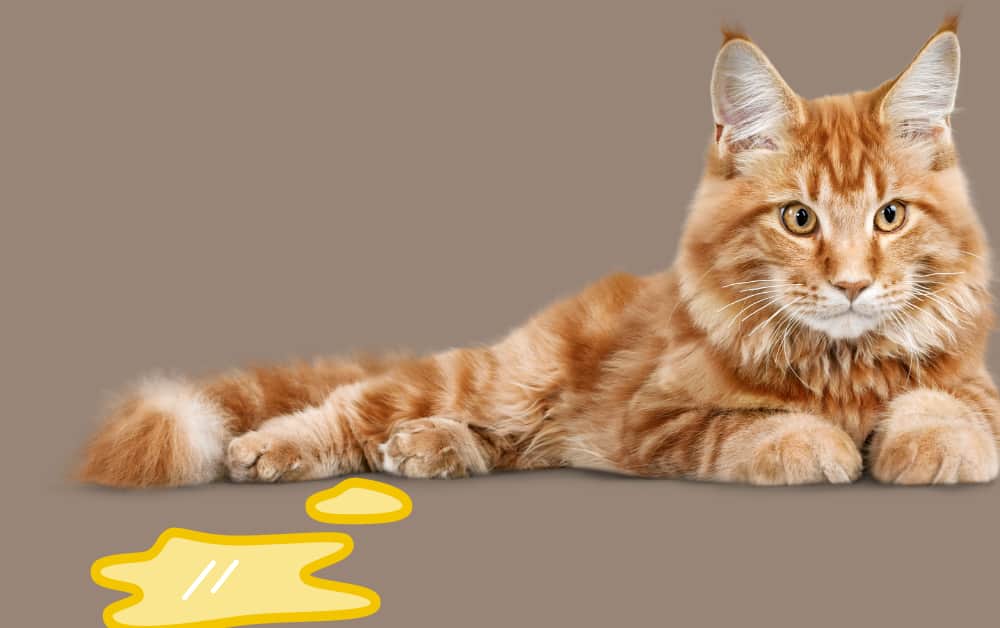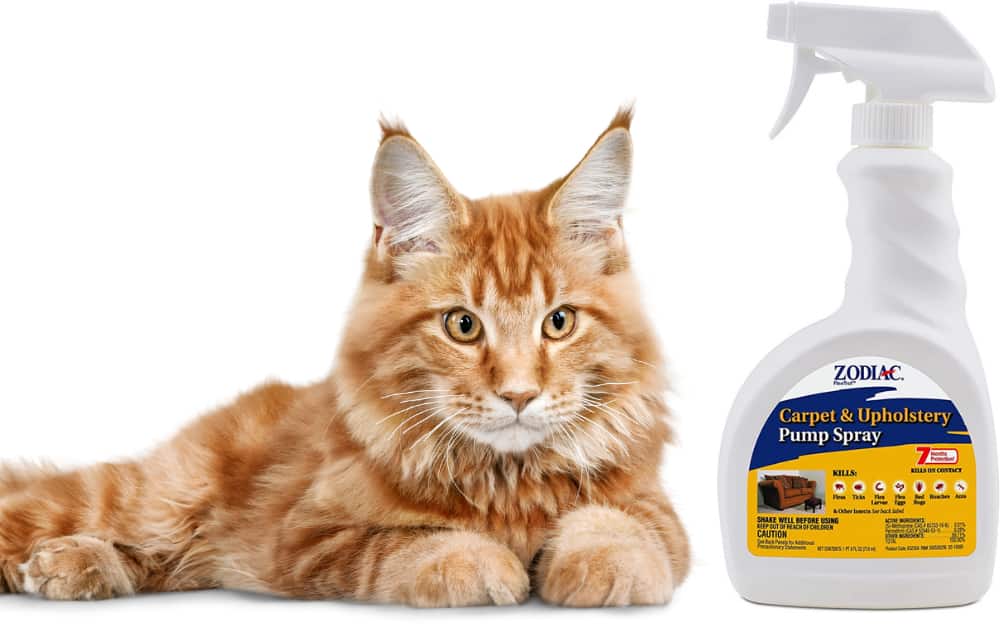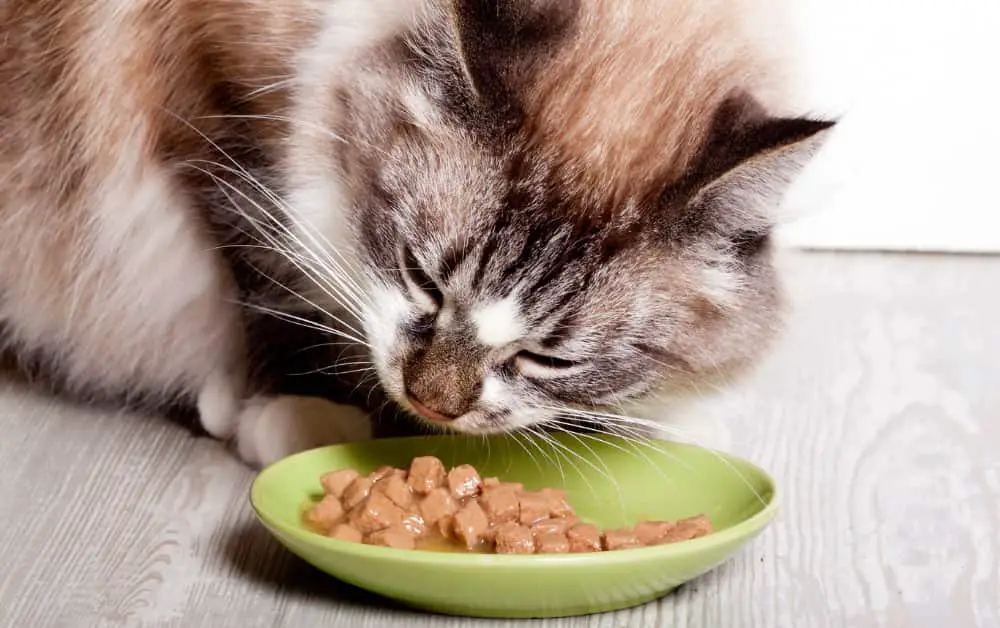Have you ever noticed bald spots on your cat? You’re not alone. Many cat owners have observed this issue. While it can be concerning in certain situations, it’s nothing to worry about in some cases. So Why do cats have bald spots?
This blog post will discuss the causes of bald spots on cats and what you can do if you suspect your cat has one. We’ll also provide some tips for preventing bald spots from occurring in the first place.
Why do cats have Bald spots?
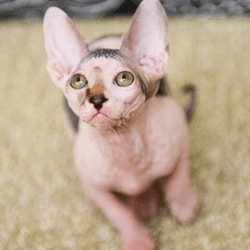
Bald spots and patches on cats appear for many reasons. The leading causes of feline bald spots are mites or fleas, over-grooming, skin allergies, alopecia, eczema, ringworm and fungal infection.
9 Reasons for Bald spots on cats
#1) External Parasites Mites and Fleas
Cats are lovely creatures, but they’re not invulnerable. One thing that can harm them is an infestation of external parasites, such as mites or fleas.
These pests can cause bald patches on cats and irritation and itchiness. In severe cases, parasites can even lead to anemia. Thankfully, there are many products available to kill and repel parasites.
Regular grooming can also help to remove parasites from your cat’s fur. If you suspect that your cat has a parasite problem, take them to the vet for a check-up.
With the proper treatment, your feline friend will soon be back to their usual self.
#2) Over-Grooming due to stress and Anxiety
If you’ve ever noticed your cat excessively grooming themselves and having bald spots hair loss or patches, it might be due to stress or Anxiety.

These are common psychological disorders in cats that can lead to a condition known as psychogenic alopecia, which is characterized by self-inflicted hair loss.
While the exact cause of psychogenic alopecia is unknown, it’s believed to be triggered by changes in the environment or routine that cause stress or Anxiety. For example, a new pet in the house, moving to a new home, or even simply having too little space to roam can all contribute to this condition.
While bald patches on felines can be unsightly, they’re usually not harmful and will eventually grow back once the underlying stressor is resolved.
You can try the Recommended:
#3) Skin Illnesses
Cats are prone to various skin conditions that can cause bald spots and patches on the kitty skin. One of the most common is feline acne, caused by blocked hair follicles.
The situation is typically found on the chin and can be treated with a topical antibiotic.
#4) Alopecia
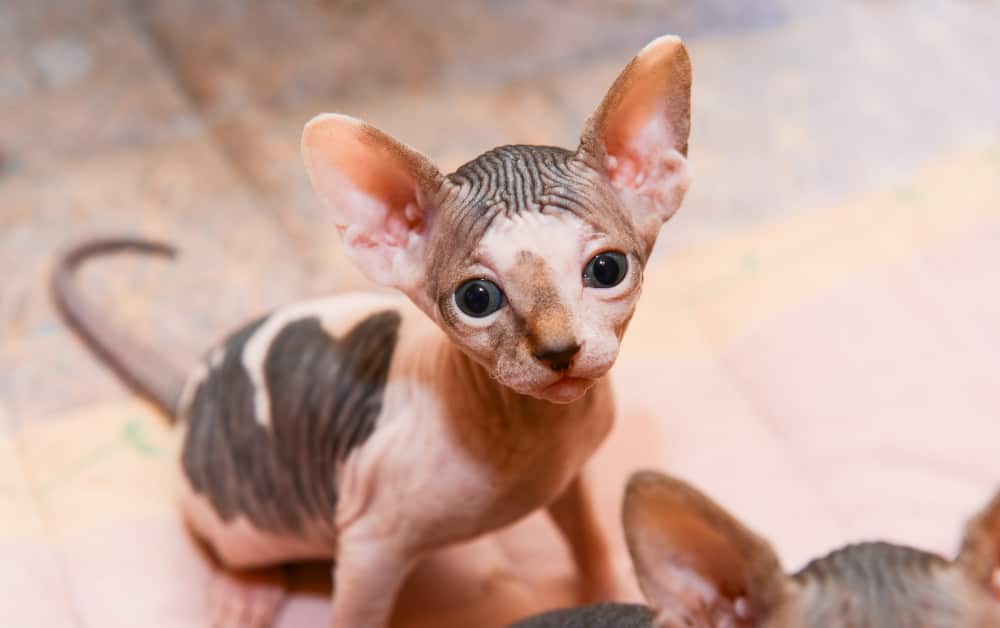
Alopecia in cats is a condition that can cause severe hair loss, bald spots, red and dark patches on felines skin. The disease can be idiopathic, meaning that the cause is unknown, or an underlying medical condition can cause it.
Idiopathic alopecia is more common in young kittens, while medical causes are more common in older cats. Alopecia can also be caused by stress, poor nutrition, allergies, and other environmental factors.
While the condition is not painful, it can be upsetting for both the pet and its owner. There are various treatment options available, depending on the underlying cause.
In some cases, the hair will regrow on its own. However, if the bald spots on cats are persistent or severe, your veterinarian may recommend medical therapy, such as corticosteroids or immunosuppressants.
#5) Allergies
Allergies are a common problem for cats, and they can lead to a wide range of health issues. One of the most common problems is skin allergies, which can cause itchiness, redness, and hair loss and bald patches on felines.
In severe cases, cats may develop bald spots. Allergies can also cause respiratory problems, such as wheezing and sneezing. In some cases, they may even lead to asthma.
Digestive problems are another common issue in allergic cats, as the inflammation caused by the allergies can lead to vomiting and diarrhea.
If not treated promptly, allergies can cause serious health problems for cats. Fortunately, there are many ways to manage allergies and help keep your cat healthy.
#6) Ringworm Fungal Infection
Another common condition is ringworm, a fungal infection that causes bald patches and red, raised lesions. Ringworm can be treated with oral or topical antifungal medications.
If you notice any bald spots or patches on your cat, it’s essential to have them evaluated by a veterinarian to determine the cause and appropriate treatment.
#7) Eczema or Atopic dermatitis
Any pet owner knows that dealing with a sick animal can be heartbreaking. When our furry friends are in pain, we want nothing more than to make them feel better. However, sometimes their conditions can be mysterious, making it difficult to know how to help.
One condition that can be exceptionally baffling is eczema. This skin condition can cause red, inflamed patches and hair loss in cats. While the exact cause of eczema is unknown, it is believed to be linked to allergies or an overactive immune system.

In some cases, it may also be caused by a bacterial or fungal infection. If your cat is dealing with eczema, it is essential to take them to the vet for a diagnosis and treatment plan.
In the meantime, there are a few things you can do at home to help soothe their symptoms. Make sure they have access to clean water and a nutritious diet.
You can also talk to your vet about giving them supplements or baths with medicated shampoo. Taking care of your cat and working with your vet can help them get through this difficult time.
#8) Thyroid Problems
One common health problem that can cause cats to lose their appetite is thyroid disease. Thyroid disease is a hormonal disorder that can cause various symptoms, including skin problems.
In cats, thyroid problems can manifest as dermatitis, characterized by bald spots, bald patches, and itchy skin. If your cat is scratching more than usual or seems in discomfort, it’s essential to take them to the vet to rule out thyroid disease or other possible health issues.
Most felines with thyroid problems can lead happy and healthy lives with early diagnosis and treatment.
#9) Diet
If your cat’s skin is itchy, dry, or flaky, it could signify that their diet isn’t providing them with the nutrients they need. Cats are obligate carnivores, which means that their bodies are designed to digest and use animal-based proteins.
However, many commercial cat foods are based on plant proteins, which can be challenging for cats to digest and cause nutritional imbalances.
As a result, a high diet of animal-based proteins is essential for keeping your cat’s skin healthy. If you’re unsure whether your cat’s food meets their needs, talk to your veterinarian about switching to a protein-rich diet.
For the good health of your feline friend coat try Blue Buffalo Perfect Coat Natural Skin & Coat Diet For Cats.
Your cat’s skin will soon be healthy and itch-free with the proper nutrition.
#10) Genetic Conditions
Certain genetic conditions can cause a cat to experience health and skin issues, including bald spots. One such condition is called feline hyperesthesia syndrome, which can cause the cat to experience intense sensations of itchiness and seizures and Anxiety.
As a result, affected cats will often obsessively groom themselves, leading to hair loss and bare patches of skin. Other conditions that can cause baldness in cats include ringworm and mange.
While these conditions are not necessarily life-threatening, they can be very uncomfortable for the cat and can lead to secondary infections if left untreated.
Fortunately, there are effective treatments available for all of these conditions, so if your cat is experiencing baldness, it is essential to seek veterinary care.
You May Also Like To Read:
- 5 Tonic Home Remedies For Sick Cats Not Eating
- How often do cats Pee a day? 5 ways to Stop Irregular Urinating
Treatment of Bald Spots and patches on cats
1. Diet change: As mentioned above, a diet high in animal-based proteins is essential for keeping your cat’s skin healthy and will help to fight against bald spots on your kitten.
If you’re unsure whether your cat’s food meets their needs, talk to your veterinarian about switching to a protein-rich diet.
2. Medicated shampoo: Your vet may recommend using a medicated shampoo to help soothe your cat’s skin.
3. Supplements: You can talk to your vet about giving your cat supplements to help them get the nutrients they need.
4. Bathing: You can give your cat baths with warm water and mild soap to help clean and moisturize their skin.
5. Steroids: Your vet may prescribe steroids to help reduce inflammation and itching in some cases.
6. Antihistamines: Your vet may also recommend giving your cat antihistamines to help relieve itchiness.
7. Antibiotics: If your feline has an infection, it may need to be given antibiotics with your veterinarian advice.
8. Fungal or bacterial infection treatment: If your kitty has a fungal or bacterial infection, it must be treated with the appropriate medication.
9. Allergy treatment: If your feline is allergic to something in their environment, you will need to remove the allergen and give them medication to help relieve their symptoms.
10. Ringworm treatment: If your pet has ringworm, it will need to be treated with an antifungal medication.
11. Allergy shots: If your cat is allergic to something in their environment, you may need to give them allergy shots to help them build up immunity.
12. Surgery: In extreme cases, surgery may be necessary to remove bald spots or patches of skin that are affected by a genetic condition.
How do I stop my cat from licking Bald spots?
#1. Try to figure out what’s causing the licking in the first place. If your cat is anxious or stressed, for example, that could be why they’re licking their fur more than usual.
#2. Talk to your veterinarian about possible medical causes of the licking, such as allergies or skin problems.
#3. Provide your cat with plenty of environmental enrichment, such as toys, climbing structures, and perches. This can help reduce stress and keep them occupied.
#4. Try using a bitter-tasting spray or cream on the areas your cat is licking. This can deter them from licking if they don’t like the taste.
#5. If all else fails, you may need to consult with a behaviorist to help you figure out how to get your cat to stop licking.
FAQ:
Is it normal for my cat to have bald spots?
There’s a lot of variation in how cats look, so it’s hard to say what’s normal and what isn’t. However, if your cat has sudden or unexplained bald spots, it’s worth taking them to the vet to get checked out, to be on the safe side.
It could be a sign of an underlying health condition or even just a reaction to something in their environment. In any case, it’s best to err on the side of caution and get your cat checked out by a professional.
What causes bald spots on cats head?
Many potential causes of bald spots on a cat’s head include allergies, parasites, and underlying medical conditions. Allergies are a common cause of hair loss in cats and can be triggered by anything from food to environmental allergens. Parasites like fleas and mites can also cause hair loss, as they can bite and cause irritation to the skin.
Finally, certain medical conditions can lead to hair loss and bald spots on cats head, such as thyroid problems or autoimmune diseases. If your cat is experiencing bald spots, it is best to take them to the vet for a thorough examination to determine the underlying cause.
Why is my cat licking bald spots on himself?
There could be a few reasons why your cat is licking bald spots on himself. It could be that he’s trying to self-groom and is over-zealous in his licking, which can lead to hair loss. Alternatively, he may have an underlying skin condition that is causing him to itch and lick excessively.
Why does my cat have a bald spot on his neck?
There are several reasons why your cat may have a bald spot on his neck. One possibility is that he has an underlying medical condition causing hair loss. Another possibility is that he’s simply overgrooming himself in that area. Suppose your cat is otherwise healthy, and you don’t think there’s an underlying medical reason for the hair loss.
In that case, you may want to try giving him a cat collar or other physical barrier to keep him from overgrooming in that area.
Conclusion:
Why do cats have Bald spots Patches? There are a few reasons why cats can develop bald spots. One of the most common causes is fleas.
When cats have an infestation of fleas, they can start to lose hair as the parasites feast on their blood.
Another common cause of baldness in cats is ringworm, a fungal infection that can cause patches of hair loss on the body. Poor nutrition and underlying health conditions can also lead to bald spots in cats.
If your cat has developed a bald spot, it’s essential to take him to the vet for diagnosis and treatment.
If you have any question let us know in the comment section. Our team will respond shortly.


